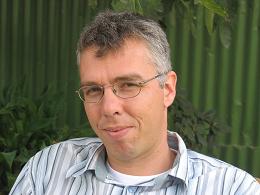|
Jan de Gier*: Back to the Future |
An expanded version of this opinion piece was first published in the "Maths matters" section of the May 2008 issue of the Gazette of the Australian Mathematical Society
For many years, the problems faced by young
(and not so young) people in establishing their academic careers have not
been fully appreciated by university management and governments. This now seems to have changed, and, very
slowly, there seems to be an emerging world-wide appreciation of the value
of young talent for universities. In order to retain such talent, it is
important that governments and universities reflect on their past policies,
and make academia again an attractive workplace.
management and governments. This now seems to have changed, and, very
slowly, there seems to be an emerging world-wide appreciation of the value
of young talent for universities. In order to retain such talent, it is
important that governments and universities reflect on their past policies,
and make academia again an attractive workplace.
Australian universities and governments have to act swiftly. Otherwise they will lose talent to more lucrative options in business or more welcoming environments at overseas institutions. At the moment, universities and governments appear to be unaware of the urgency of the matter.
According to Rohan Carr, a director of The Insight Group: "Something needs to be done now because it's going to take time (to fix the problem). In three years' time (when new funding arrangements are expected to arise from the government's new review) we'll have lost three more years' (worth) of academics. It's very easy to tip more money into the sector. What you can't do in a short time frame is retain people or attract them into the sector.
"(As an academic) you have to churn out lots of research, you have to have a high teaching load, you have to manage.'' He said that modern business had learned how vital it was to be able to attract and keep talent but most universities were oblivious to this truth. Their procedures often were too slow and cumbersome for hiring good academics and keeping them happy. ``When it comes to people-management practices, they are a long way from leading edge.''
Over the next decade, skill in securing and hanging on to first-rate academics might become more important for quality and reputation than the established advantages of a sandstone institution. "Already some universities are becoming more nimble at this than others."1
This, unfortunately, is indeed a reality in mathematics. Two concrete
examples occurred last year at my own university. Two very promising and
motivated young mathematicians recently departed. One left for Canada
despite the fact that this person had just been awarded a prestigious
five-year ARC QEII fellowship. Little effort was made by the university to
retain him. The other, a past editor of the AustMS Gazette has just
become a Fellow of the Australian Academy of Science and has been
cherry-picked as a professor by another Australian institution. The
university was not able to offer a real future.
Competitive research
In mathematics it is well-established that researchers can make substantial
contributions at a young age, and that much innovative and internationally
competitive research is done by nontenured post-docs and PhD students. For
young people in mathematics and statistics it is therefore very important
that research is valued appropriately (i.e. with sustained funding tied to
individual researchers).
There are hints that the Federal government is serious about maintaining and enhancing Australia's competitiveness in research. So far, the only tangible initiative from the government to address this issue is the announcement of Future Fellowships for mid-career researchers. This could work out really well as a short term fix, but I am not a big fan of these one-off action items. Without taking anything away from those who are able to win prestigious fellowships, the scientific community as a whole is not much helped by such an initiative if there is no sustainable future plan to follow it up. Besides, top scientists are not attracted or retained by incidental and scarce injections of money, especially if there are no obvious academic career paths for the future. An example, already mentioned above, is the departure of one of my colleagues to Canada, despite the fact that he had just been awarded a QEII Fellowship.
What is needed is a sustainable system in which the very best people can
flourish with strong funding, but which is also able to support a critical
mass of both upcoming and established researchers such that a vibrant,
collegial and stimulating research environment is maintained.2
Solutions
As argued above, Australia needs to make sure that the tertiary education sector again becomes an attractive workplace for young academics. This holds in particular for mathematics, where in many cases substantial contributions are made by very young researchers. A sensible and sustainable solution has to be found, and it has to be found quickly.
Many of the young people I know in maths departments around the country are more than pulling their weight. In some instances they could perhaps be encouraged to engage more in the decision making process of their departments, universities and professional societies. This also means that some of the barriers within the sector's hierarchical structures need to be lowered, so as to involve, rather than disenfranchise, non-tenured junior members. Some small but important steps that can be taken immediately are:

It is quite clear that more government funding should flow into the system, but, as argued above, the system itself needs to change as well. Some simple and obvious adjustments are:

_______________________________________________________
*Jan de Gier, Department of Mathematics and Statistics, The University of Melbourne, email: degier@ms.unimelb.edu.au
1Staff crisis first bill of order, Bernard Lane, The Australian, 2 April 2008.
2See also Brains drain to where the future lies.